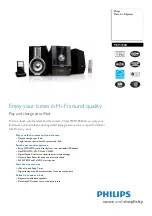
UHF TV Band (732-746 MHz)
Freq. Code
Freq. (MHz)
• For use only where there is no TV Channel 57:
57R
732.650
57V
733.000
• For use only where there is no TV Channel 58:
58F
735.600
58G
735.950
58K
736.650
58L
737.000
• For use only where there is no TV Channel 59:
59K
742.700
59Q
744.100
59R
744.850
59S
745.200
System Operating Frequencies
900 MHz Band (944-952 MHz)
Freq. Code
Freq. (MHz)
44C
944.100
44Q
944.700
45A
945.000
46E
946.200
47C
947.100
48N
948.600
49S
949.800
50L
950.500
51M
951.550
51U
951.900
For future reference, please record your system information here (the serial numbers appear
inside the battery compartment of each transmitter, and on the bottom of each receiver):
Operating Frequency
Freq. Code ____ ____ ____
Frequency ____ ____ ____ • ____ ____ ____ MHz
Receiver
Model __________________
Serial Number ____ ____ ____ ____ ____ ____ ____
Transmitter
Model __________________
Serial Number ____ ____ ____ ____ ____ ____ ____
7
Aside from the TV channel restrictions above, multi-channel systems may combine up to all 20 frequencies. Due to the unique
conditions encountered in any complex system, the following guidelines may be helpful:
• Use the Low-power transmitter setting to reduce the possibility of interference.
• Maintain the maximum possible spacing between transmitters and receivers, and between transmitters.
• 1900 Series operating frequencies have been selected for optimum compatibility. However,
all
sources of 700-900 MHz
RF energy (other manufacturers’ wireless systems, 900 MHz cordless phones, etc.) can affect the overall performance of the
multi-mic system in ways which cannot be predicted. Only on-site trials with
all
RF equipment in operation can determine the
overall system functionality.
Frequency Selection
Each transmitter/receiver system operates on a single factory-
aligned, crystal-controlled frequency. Available frequencies are
shown in the chart below. Frequencies in the 732-746 MHz
band are useable in the U.S. and Canada; 944-952 MHz
frequencies are approved for use only in the U.S.
Because the 732-746 MHz frequencies are shared with TV
broadcasting, frequency selection is partially dependent upon
which TV broadcast channels are in operation
where the wire-
less system is to be used.
Operating frequency is specified by a three-character code,
such as “57V,” in addition to the actual frequency in MHz.
The frequency of each transmitter appears on a label on the
outside of the unit. The frequency of each receiver appears on
a label on the back of the unit and the frequency of each sys-
tem appears on the outer carton. For future reference, please
record them in the space provided below.
Wireless Operating Frequencies
RF Interference
If you encounter receiving interference (from other than an
operating TV station), often it can be eliminated by adjusting
the receiver’s squelch control, as described on page 5.
Please note that wireless frequencies are shared with other
radio services. According to Federal Communications
Commission regulations,“Wireless microphone operations are
unprotected from interference from other licensed operations
within the band. If any interference is received by any
Government or non-Government operation, the wireless
microphone must cease operation...”
If you need assistance with operation or frequency selection,
please contact your dealer or the A-T professional division.
Extensive wireless information also is available on the A-T
Web site at www.audio-technica.com.


























